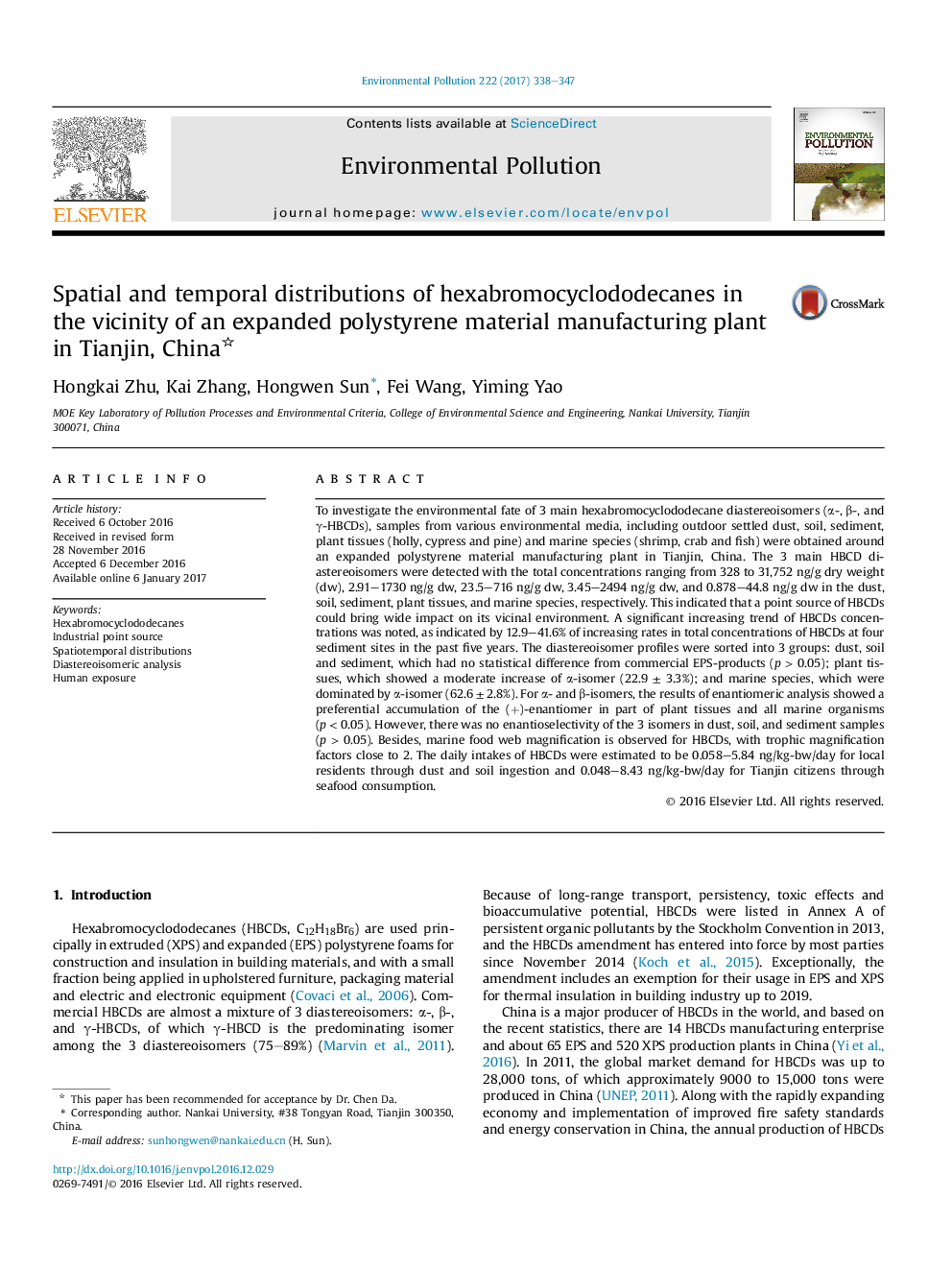| کد مقاله | کد نشریه | سال انتشار | مقاله انگلیسی | نسخه تمام متن |
|---|---|---|---|---|
| 5749028 | 1619151 | 2017 | 10 صفحه PDF | دانلود رایگان |

- A point source of HBCDs brought extensive impacts on the vicinal environment.
- An increasing temporal trend of HBCDs in the sediment was noted.
- HBCDs could be biomagnified along with food chain in the Bohai Bay.
- α-HBCD was preferentially enriched in organisms especially in marine species.
- Enantiomer fractions of HBCDs in collected samples were reported.
To investigate the environmental fate of 3 main hexabromocyclododecane diastereoisomers (α-, β-, and γ-HBCDs), samples from various environmental media, including outdoor settled dust, soil, sediment, plant tissues (holly, cypress and pine) and marine species (shrimp, crab and fish) were obtained around an expanded polystyrene material manufacturing plant in Tianjin, China. The 3 main HBCD diastereoisomers were detected with the total concentrations ranging from 328 to 31,752 ng/g dry weight (dw), 2.91-1730 ng/g dw, 23.5-716 ng/g dw, 3.45-2494 ng/g dw, and 0.878-44.8 ng/g dw in the dust, soil, sediment, plant tissues, and marine species, respectively. This indicated that a point source of HBCDs could bring wide impact on its vicinal environment. A significant increasing trend of HBCDs concentrations was noted, as indicated by 12.9-41.6% of increasing rates in total concentrations of HBCDs at four sediment sites in the past five years. The diastereoisomer profiles were sorted into 3 groups: dust, soil and sediment, which had no statistical difference from commercial EPS-products (p > 0.05); plant tissues, which showed a moderate increase of α-isomer (22.9 ± 3.3%); and marine species, which were dominated by α-isomer (62.6 ± 2.8%). For α- and β-isomers, the results of enantiomeric analysis showed a preferential accumulation of the (+)-enantiomer in part of plant tissues and all marine organisms (p < 0.05). However, there was no enantioselectivity of the 3 isomers in dust, soil, and sediment samples (p > 0.05). Besides, marine food web magnification is observed for HBCDs, with trophic magnification factors close to 2. The daily intakes of HBCDs were estimated to be 0.058-5.84 ng/kg-bw/day for local residents through dust and soil ingestion and 0.048-8.43 ng/kg-bw/day for Tianjin citizens through seafood consumption.
306
Journal: Environmental Pollution - Volume 222, March 2017, Pages 338-347